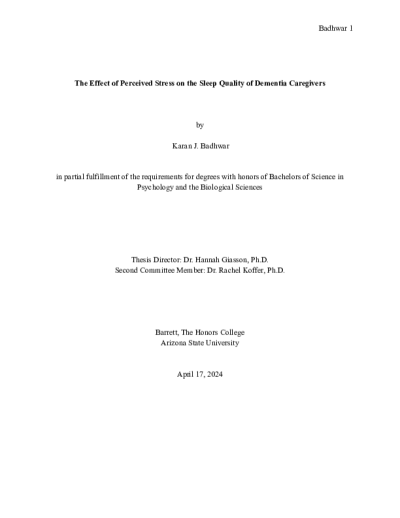Filtering by
- All Subjects: Depression
- Creators: Department of Psychology
- Resource Type: Text
- Status: Published

The Beck Depression Inventory II (BDI-II) and the Patient Health Questionnaire 9 (PHQ-9) are highly valid depressive testing tools used to measure the symptom profile of depression globally and in South Asia, respectively (Steer et al., 1998; Kroenke et al, 2001). Even though the South Asian population comprises only 23% of the world’s population, it represents one-fifth of the world’s mental health disorders (Ogbo et al., 2018). Although this population is highly affected by mental disorders, there is a lack of culturally relevant research on specific subsections of the South Asian population.
As such, the goal of this study is to investigate the differences in the symptom profile of depression in native and immigrant South Asian populations. We investigated the role of collective self-esteem and perceived discrimination on mental health.
For the purpose of this study, participants were asked a series of questions about their depressive symptoms, self-esteem and perceived discrimination using various depressive screening measures, a self-esteem scale, and a perceived discrimination scale.
We found that immigrants demonstrated higher depressive symptoms than Native South Asians as immigration was viewed as a stressor. First-generation and second-generation South Asian immigrants identified equally with somatic and psychological symptoms. These symptoms were positively correlated with perceived discrimination, and collective self-esteem was shown to increase the likelihood of these symptoms.
This being said, the results from this study may be generalized only to South Asian immigrants who come from highly educated and high-income households. Since seeking professional help and being aware of one’s mental health is vital for wellbeing, the results from this study may spark the interest in an open communication about mental health within the South Asian immigrant community as well as aid in the restructuring of a highly reliable and valid measurement to be specific to a culture.



This narrative literature review explores how perceived stress affects sleep quality in dementia caregivers by examining various factors. Ten studies from 2013 to 2022 across four continents were analyzed, focusing on caregiver stress levels, sleep quality, caregiver burden, and depression. Higher stress levels were linked to poorer sleep quality, alongside factors like emotional distress and disrupted sleep patterns. The findings highlight the importance of targeted interventions to reduce stress and improve sleep quality among dementia caregivers, suggesting the need for longitudinal and empirical studies with standardized measures for a better understanding.